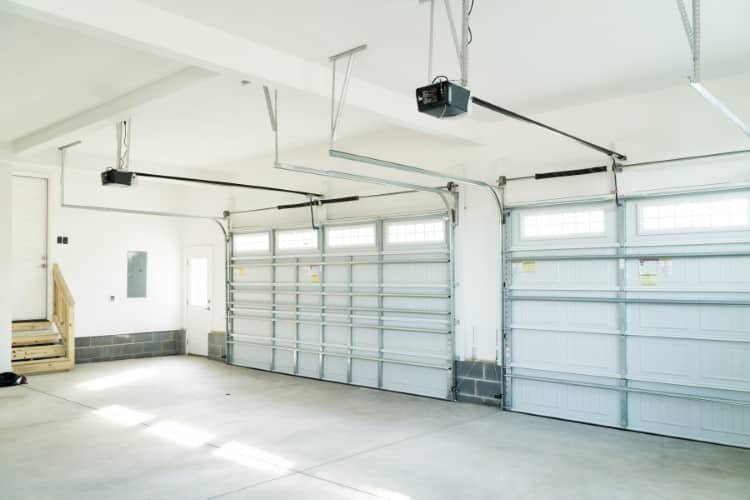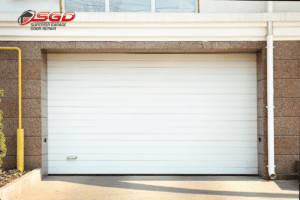The R-value measures the thermal resistance of a material, indicating how well it can resist heat flow. In the context of garage doors, the R-value determines how effectively the door can insulate your garage, keeping it cool in the summer and warm in the winter. When it comes to energy efficiency and insulation, the R-value is a crucial factor to consider.
Garage door insulation
Garage door insulation is an essential aspect of maintaining a comfortable and energy-efficient home. Many homeowners often overlook the importance of insulating their garage doors, focusing primarily on the walls and roof. However, a properly insulated garage door can significantly contribute to reducing energy consumption and improving overall comfort.
Understanding R-value and its importance
The R-value of a garage door indicates its ability to resist heat transfer. A higher R-value means better insulation and increased energy efficiency. It is crucial to understand the R-value of your garage door because it directly impacts the performance and comfort of your garage space.
The R-value is calculated based on the type and thickness of the insulation material used in the garage door. Different insulation materials have different thermal resistance properties, resulting in varying R-values. By understanding the R-value of your garage door, you can make informed decisions when it comes to improving its insulation.
Factors that affect the R-value of garage doors
Several factors can affect the R-value of a garage door. These factors include the type of insulation material, the thickness of the insulation, and the construction of the door itself. Let’s take a closer look at each of these factors:
-
Insulation material
The type of insulation material used in the garage door plays a significant role in determining its R-value. Common insulation materials include polyurethane foam, polystyrene foam, and fiberglass. Each material has different thermal resistance properties, resulting in variations in R-values.
-
Insulation thickness
The thickness of the insulation also affects the R-value of the garage door. Thicker insulation generally provides better insulation performance and higher R-values. However, it is essential to strike a balance between insulation thickness and the overall weight and functionality of the garage door.
-
Door construction
The construction of the garage door itself can impact its R-value. A well-constructed door with proper seals and weatherstripping can minimize air leakage and improve insulation performance. Additionally, the design and material of the door panels can influence its overall thermal resistance.
Considering these factors when choosing a garage door can help you select one with a higher R-value, ensuring optimal insulation and energy efficiency.
How to determine the R-value of a garage door
Determining the R-value of a garage door is crucial for understanding its insulation capabilities. While some garage doors come with a labeled R-value, others may require further investigation. Here are a few methods to determine the R-value of your garage door:
-
Manufacturer’s information: Start by checking the manufacturer’s information or product specifications for the garage door. Some manufacturers provide the R-value directly, making it easy to compare different models.
-
Third-party testing: If the manufacturer does not provide the R-value, you can look for independent third-party testing. Organizations such as the American Society of Heating, Refrigerating, and Air-Conditioning Engineers (ASHRAE) conduct tests and provide R-values for various building materials, including garage doors.
-
Consult a professional: If you’re unsure about the R-value of your garage door, consider consulting a professional. Garage door experts can assess the construction, insulation, and overall energy efficiency of your door, providing valuable insights into its R-value.
By determining the R-value of your garage door, you can make informed decisions about insulation upgrades or selecting a new door that meets your energy efficiency needs.
The benefits of a high R-value garage door
Investing in a garage door with a high R-value offers several benefits:
-
Energy efficiency: A high R-value garage door provides better insulation, reducing heat transfer and minimizing energy loss. This increased energy efficiency translates into lower heating and cooling costs throughout the year.
-
Improved comfort: With better insulation, a high R-value garage door helps maintain a comfortable temperature inside the garage. Whether you use your garage as a workshop, storage space, or parking area, a properly insulated door ensures a more pleasant environment.
-
Noise reduction: Garage doors with high R-values also offer improved soundproofing. The insulation helps dampen external noises, creating a quieter and more peaceful garage space.
-
Durability: Garage doors with higher R-values often feature robust construction and better-quality materials. This increased durability can result in a longer lifespan for your garage door, reducing the need for frequent replacements.
Investing in a high R-value garage door is a wise decision that can lead to long-term energy savings, increased comfort, and improved overall value for your home.
Different types of insulation materials used in garage doors
Garage doors can be insulated using various materials, each with its own thermal resistance properties. Here are some commonly used insulation materials in garage doors:
-
Polyurethane foam
Polyurethane foam is a popular choice for garage door insulation due to its excellent thermal resistance. It provides a high R-value while being relatively lightweight. Polyurethane foam also offers great structural integrity, making it a durable option.
-
Polystyrene foam
Polystyrene foam is another common insulation material used in garage doors. It is available in two forms: expanded polystyrene (EPS) and extruded polystyrene (XPS). Both types offer good thermal resistance and are lightweight.
-
Fiberglass
Fiberglass insulation is commonly used in residential construction, including garage doors. It consists of fine glass fibers and is known for its thermal insulation properties. Fiberglass insulation is cost-effective and easy to install.
When choosing an insulation material for your garage door, consider factors such as R-value, durability, ease of installation, and budget. Consulting with a garage door professional can help you make an informed decision based on your specific needs.
Tips for improving the R-value of your existing garage door
If you have an existing garage door with a lower R-value, there are several ways to improve its insulation capabilities:
-
Add insulation panels: Install insulation panels on the inside of your garage door. These panels can be made from various materials, such as foam board or reflective insulation. They provide an additional layer of insulation, improving the overall R-value of your door.
-
Seal gaps and cracks: Inspect your garage door for any gaps or cracks that may allow air leakage. Use weatherstripping or caulking to seal these openings, preventing cold or hot air from entering or escaping.
-
Upgrade weather seals: Replace worn-out weather seals around the edges of your garage door. Weather seals help create a tight seal, minimizing air leakage and improving insulation.
-
Consider a garage door insulation kit: Garage door insulation kits are readily available and provide an easy DIY solution for improving insulation. These kits typically include insulation panels, weatherstripping, and installation instructions.
By implementing these tips, you can significantly enhance the R-value of your existing garage door, improving energy efficiency and overall comfort.
Garage door R-value standards and certifications
To ensure transparency and consistency, various organizations have established standards and certifications for garage door R-values. These standards help consumers evaluate and compare different garage door models based on their insulation performance. Here are some notable standards and certifications to look for:
-
DASMA
The Door and Access Systems Manufacturers Association (DASMA) provides guidelines and specifications for garage door construction and performance. DASMA’s Technical Data Sheet 163 outlines the recommended R-values for residential garage doors based on climate zones.
-
ENERGY STAR
The ENERGY STAR program certifies energy-efficient products, including garage doors. ENERGY STAR-certified garage doors meet specific performance criteria, including R-values, air leakage, and solar heat gain coefficient (SHGC).
-
ASTM International
ASTM International is an organization that develops and publishes technical standards for various industries. ASTM C518 is a standard test method for measuring the steady-state thermal transmission properties of insulation materials, including those used in garage doors.
When shopping for a new garage door or evaluating the R-value of your existing one, look for these standards and certifications to ensure you are making an informed decision.
Garage door R-value comparison
Comparing the R-values of different garage door brands and models can help you make an informed decision when selecting a new door. The higher the number, the better. Here are some popular brands and their corresponding R-values:
Brand |
R-Value Range |
Door Types |
Highlights |
| Clopay | 6.5 – 20.4 | Steel, fiberglass, wood composite |
Highest R-value: 20.4 (Gallery 1800 model), diverse styles, quiet operation
|
| Amarr | 6.64 – 19.40 | Steel, wood-textured steel |
High R-values, durable, some models can mimic wood appearance
|
| Wayne Dalton | 4.36 – 16.22 | Steel, fiberglass, aluminum |
Wide range of R-values, includes affordable options, bottom-weather seal available
|
| Hormann | 9.0 – 16.0 | Steel, aluminum, natural wood |
Modern and classic styles, high-quality materials, optional insulated glass panels
|
| Martin | 8.0 – 14.0 | Steel, copper |
Unique copper option, strong and durable, good R-values, modern and traditional styles
|
| C.H.I. Overhead Doors | 5.0 – 18.0 | Steel, fiberglass, wood-grain steel |
Large variety of styles and colors, some highly insulated models, strong reputation
|
It is important to note that R-values may vary depending on the specific model and insulation options chosen. Consider your climate, budget, and desired level of insulation when comparing different garage door options.
Summary
Understanding the R-value of a garage door is crucial for ensuring optimal insulation and energy efficiency. By choosing a garage door with a high R-value and implementing insulation upgrades when needed, you can create a more comfortable and energy-efficient garage space. Consider consulting a garage door professional for expert advice and to explore different options that meet your specific needs.
Frequently Asked Questions
How much insulation does a garage door need?
The amount of insulation your garage door needs depends on various factors such as climate, usage, and personal preference. In general, it is recommended to have a garage door with an R-value of at least 10 for moderate climates and an R-value of 14 or higher for colder regions.
What is a good R-value for garage walls?
Garage walls typically require insulation with a higher R-value compared to garage doors. For optimal energy efficiency, consider insulating garage walls with an R-value of 19 or higher.
Does insulating a garage door make it too heavy?
While insulation can add some weight to the garage door, manufacturers design doors with insulation in mind. Modern garage doors are engineered to handle the additional weight without compromising their functionality or durability.
Is a higher R-value garage door worth it?
Investing in a higher R-value garage door is worth it if you prioritize energy efficiency, comfort, and long-term cost savings. A higher R-value provides better insulation, reduces energy consumption, and improves overall comfort in your garage space.








